Model of the month september 2023 Gladiator
Struck by Thunderbolt
The Gloster Gladiators of the Belgium airforce
From Original to scale model
A significant part of the collections of the air museum Hannover – Laatzen are the more than 1000 scale models , mainly built in the international scales 1/72; 1/48 and 1/32.
That true to original miniature models enable the spectators of museum history an overview , not only at a single sample. Mostly that is the only possibility for having a view on that specific plane,as no original is available any more. Also it is possible to have a glance at development history of aviation by showing timeline and a direct comparison. Even the precision and craftsmanship of the handicarft is worth to see them.
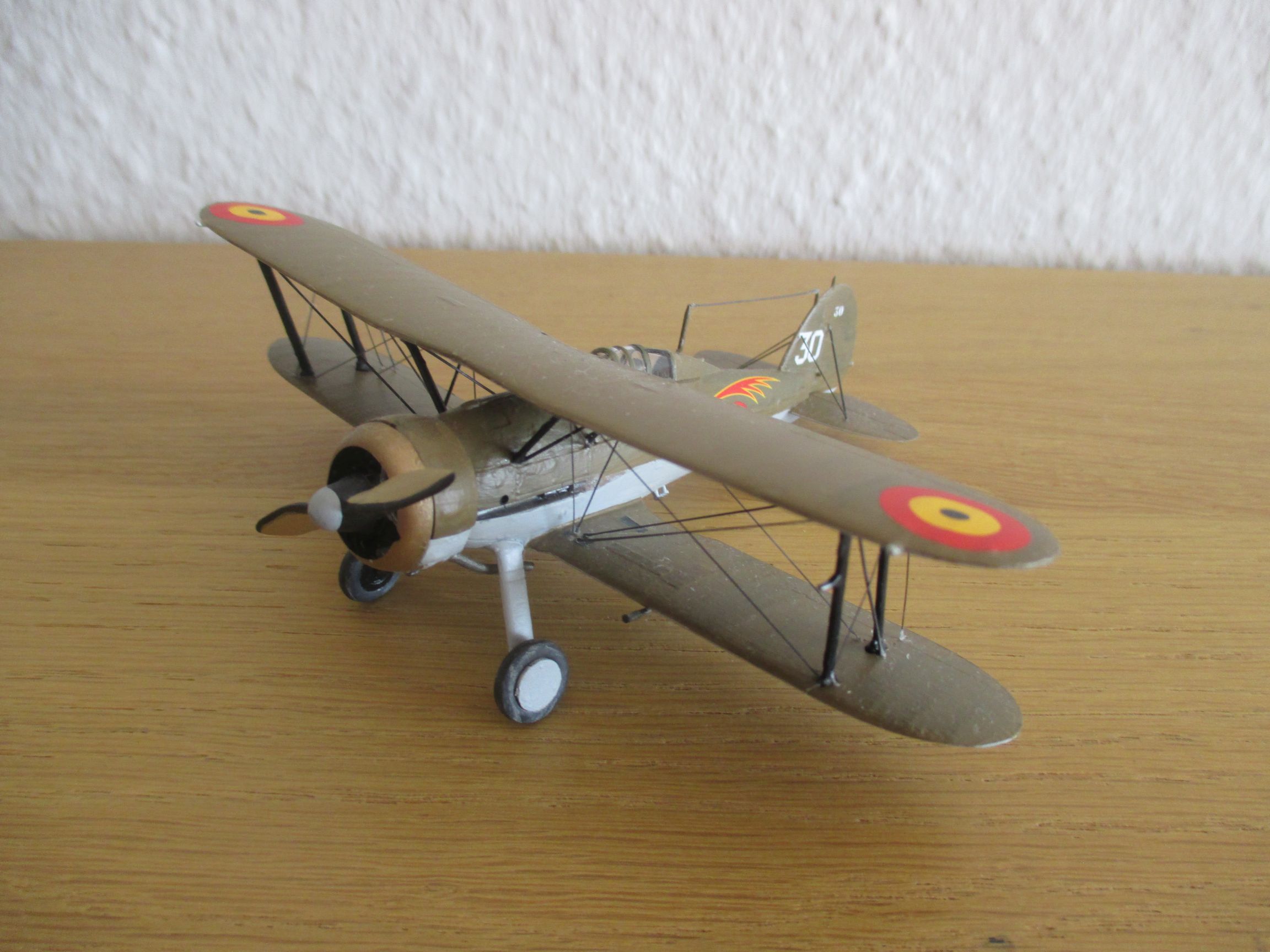
Today we will introduce the last british biplane fighter Gloster Gladiator of 1934 in our series “Model of the month”, which had been used by the Belgium airforce until 1940.
The model : Handicraft
Producer of the quite new PVC-kit incl. 50 pieces and decal set is the british company Airfix. After a kit from the early 1960s this is Airfix’s second version and currently the best in the market. Two versions (British and Belgium) can be built.
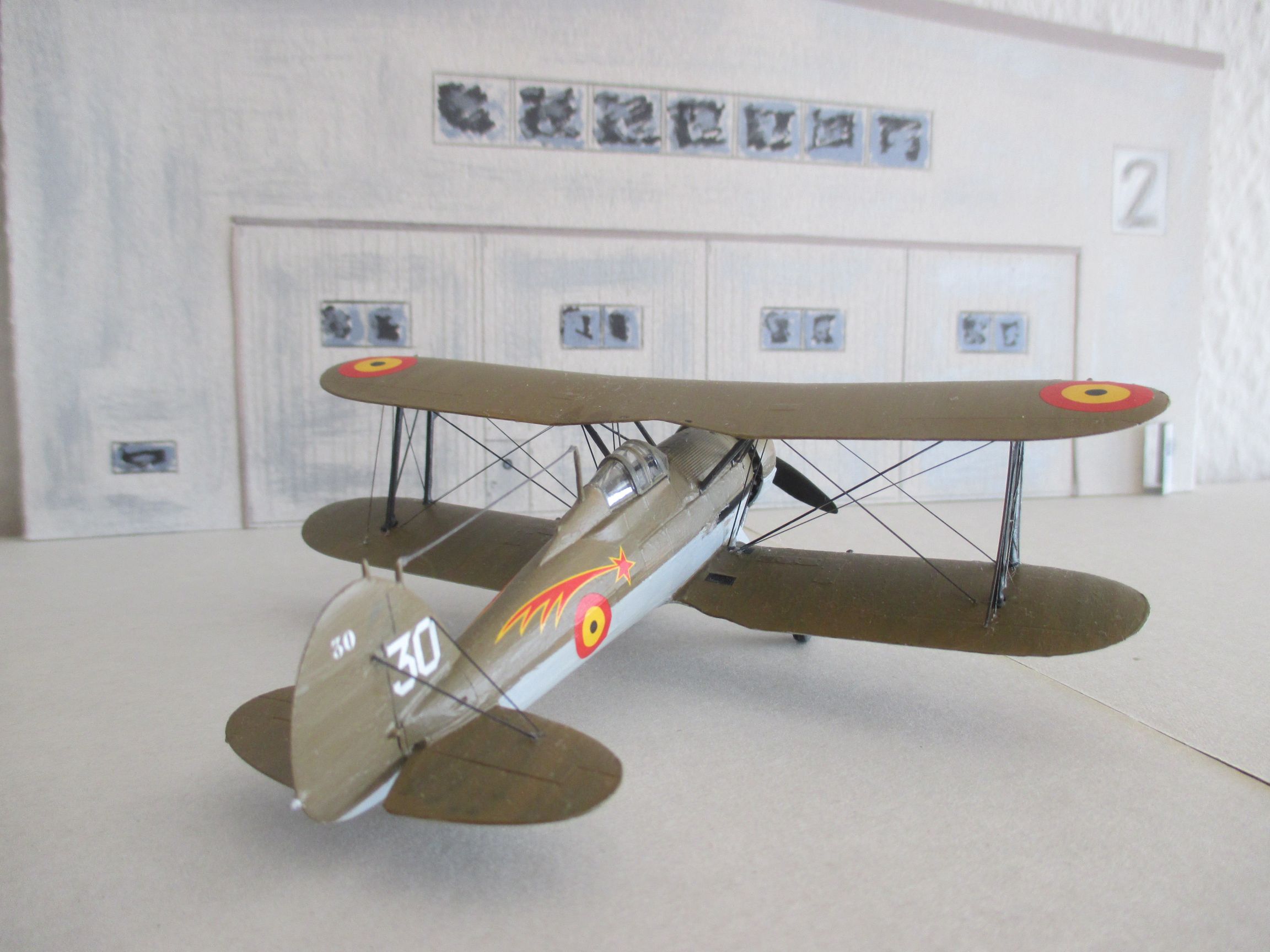
The Original The first and the last
The Gloster Gladiator has been the first “new” and at the same time the last “old style” fighter of the UK. Its history is exemplary for the technological quantum leap of the armament race of the European nations during the 1930s. As successor of the Gloster Gauntlet – last wired fighter biplane of the RAF, driven by the Bristol Mercury 9-cylinder radial engine and with fixed landing gears, the Gladiator have been the first fighter with closed cockpit , radio-system, a armament of two MG in the wings and hydraulic landingflaps. It’s max. speed of 407km/h made it to the fastest biplane with mixed constructionmaterial. Yet it was technically obsolete when it was introduced to the RAF in 1937. Armed with a total of 4 Browning 7.7mm machine guns, she remained a mere placeholder until the new (all-metal) low-wing aircraft with retractable gears, the Hawker Hurricane and the Supermarine Spitfire (as well as the ambitious but ultimately disappointing Boulton Paul Defiant) from 1938 onwards
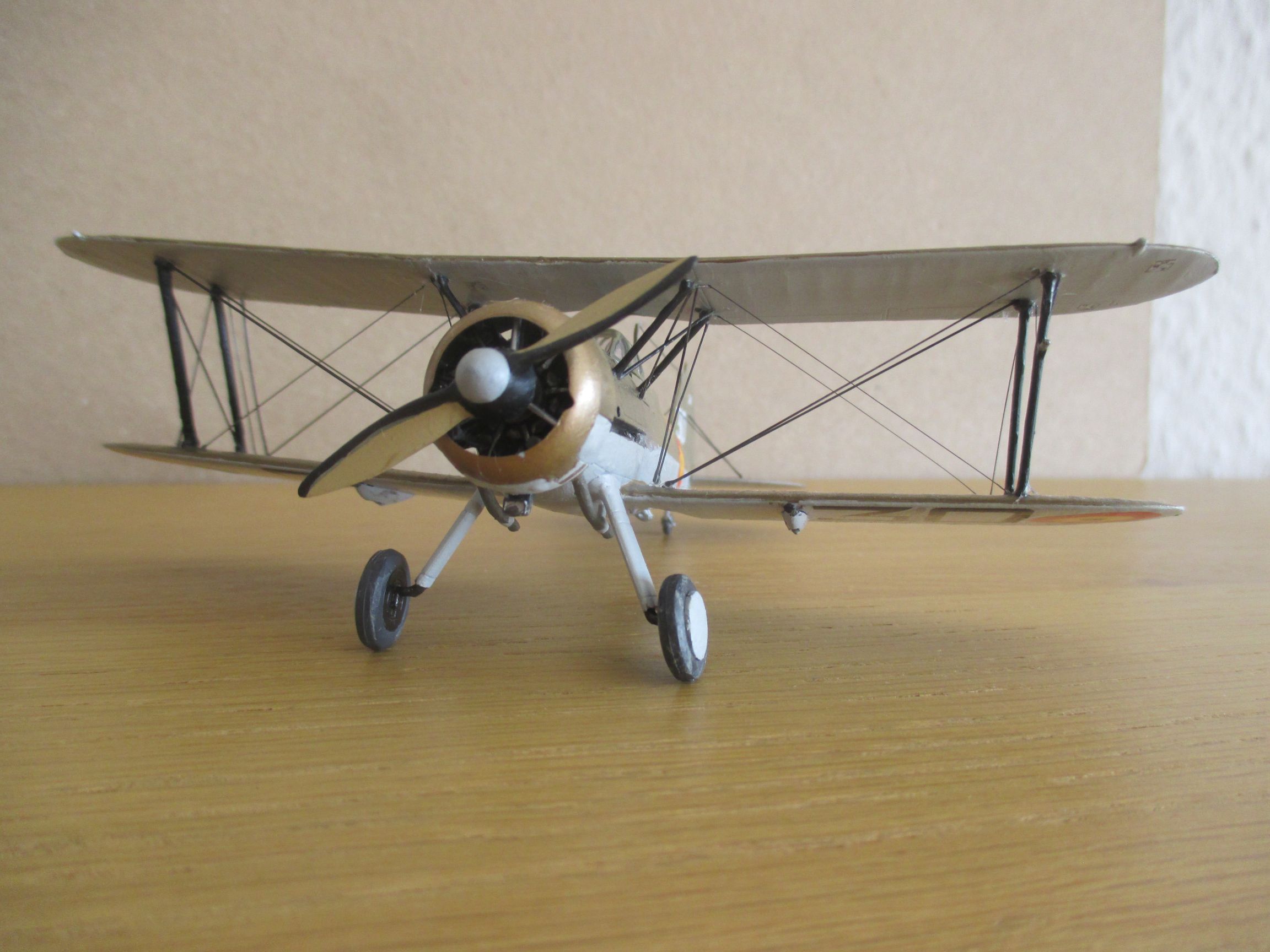
The model was braced by a plastic burr drawn over a candle. Finely detailed, the Bristol radial engine and the powerful 2-blade fixed propeller come into their own in this view.
In reaction to the German rearmament and in particular the reoccupation of garrisons in the Rhineland, the Royal Belgian Air Force, Aéronautique Militaire Belge, procured a total of 22 examples of the Gladiator Mk I together with some light bombers of the type Fairey Battle, as well as the best of the time just before the beginning of the war available fighters of the British, the Hawker Hurricane. When ordered in 1936, the Gladiator was actually still the designated standard fighter of the British RAF - so the Belgians were "up to date" at that time...
Half-life
15 Gladiators Mk I were delivered from Great Britain in 1937, a further 7 machines were assembled in Belgium from 1938 by the Sabca company to practice repair and maintenance. However, the planned licensed production did not take place. All gladiators with Belgian identifications G-17 to G-38 were assigned to Escadrille 1/I/2 Aé with the squadron emblem of a red comet under Capitaine Max Guisgand.
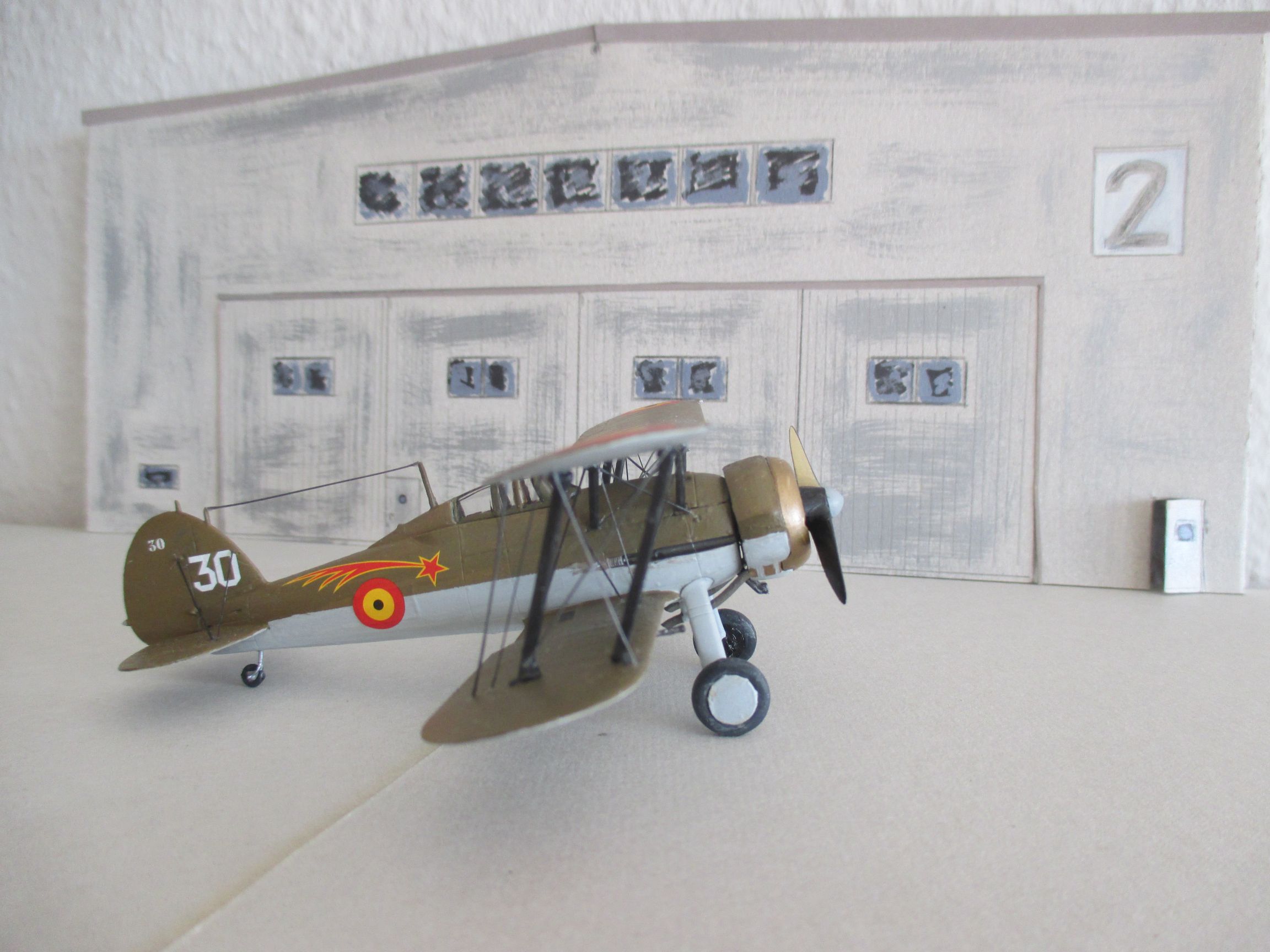
The squadron emblem on both sides of the fuselage shows a red comet – The Belgian Air Force presented its Gladiators to the public on many flight days before the Second World War.
For almost three years, the machines of the 2nd Air Regiment were used both for national defense and for demonstration flights and participation in various flight days for representation - while technically they rapidly became obsolete. As with many designs from the 1930s, the "half-life" here was barely two years... At the start of the Wehrmacht's campaign in the West in May 1940, they were wiped out within two days, together with the Fairey Battles and the Hurricanes, by the Bf 109 and 110 of the German Luftwaffe if not previously been destroyed by bombing raids on the ground. After Poland and Norway, the German "Blitzkrieg" now also rolled over the Netherlands, Belgium and France - and the Gladiators, who were technically pioneers just a few years ago, were left behind as a heap of debris... A fate that our example depicted in the model already anticipated, because two years earlier the "G-30" broke in a snowstorm near Namur and was scrapped. Essential information on this article was taken from the website www.belgian-wings.be. Thanks to the aviation historian Daniel Brackx.
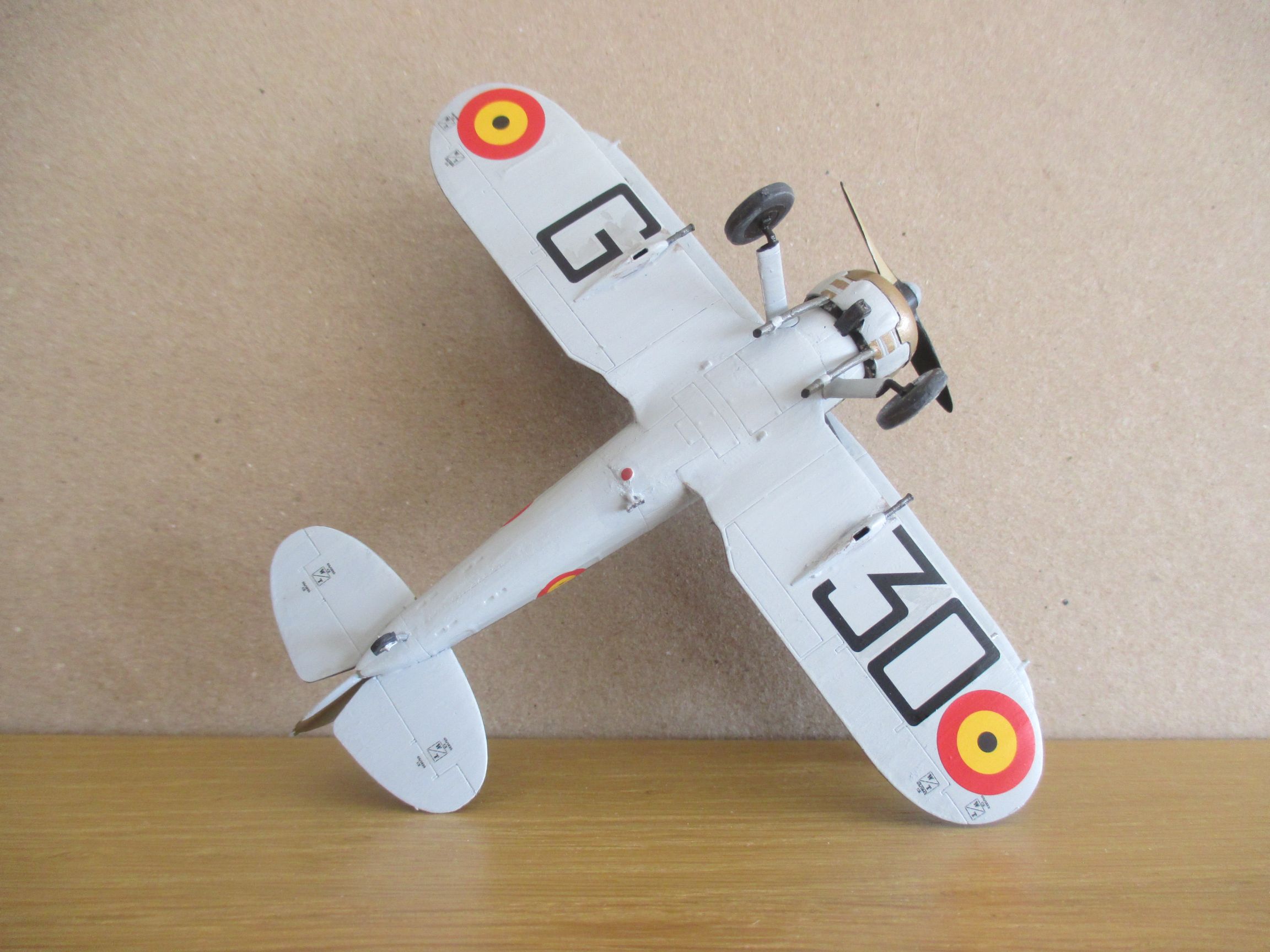
The bottom view shows the two wing machine guns, the exhaust system and the cantilever landing gear.
Data sheet for the Gladiator Mk I
Crew: 1// Length: 8.36 m// Wingspan: 9.83 m// Take-off weight: 2,083 kg// Top speed: 407 km/h// Propulsion: 1 x Bristol Mercury IX with 840 hp// Armament: 4 x 7.7mm MG// Range: 689 km.
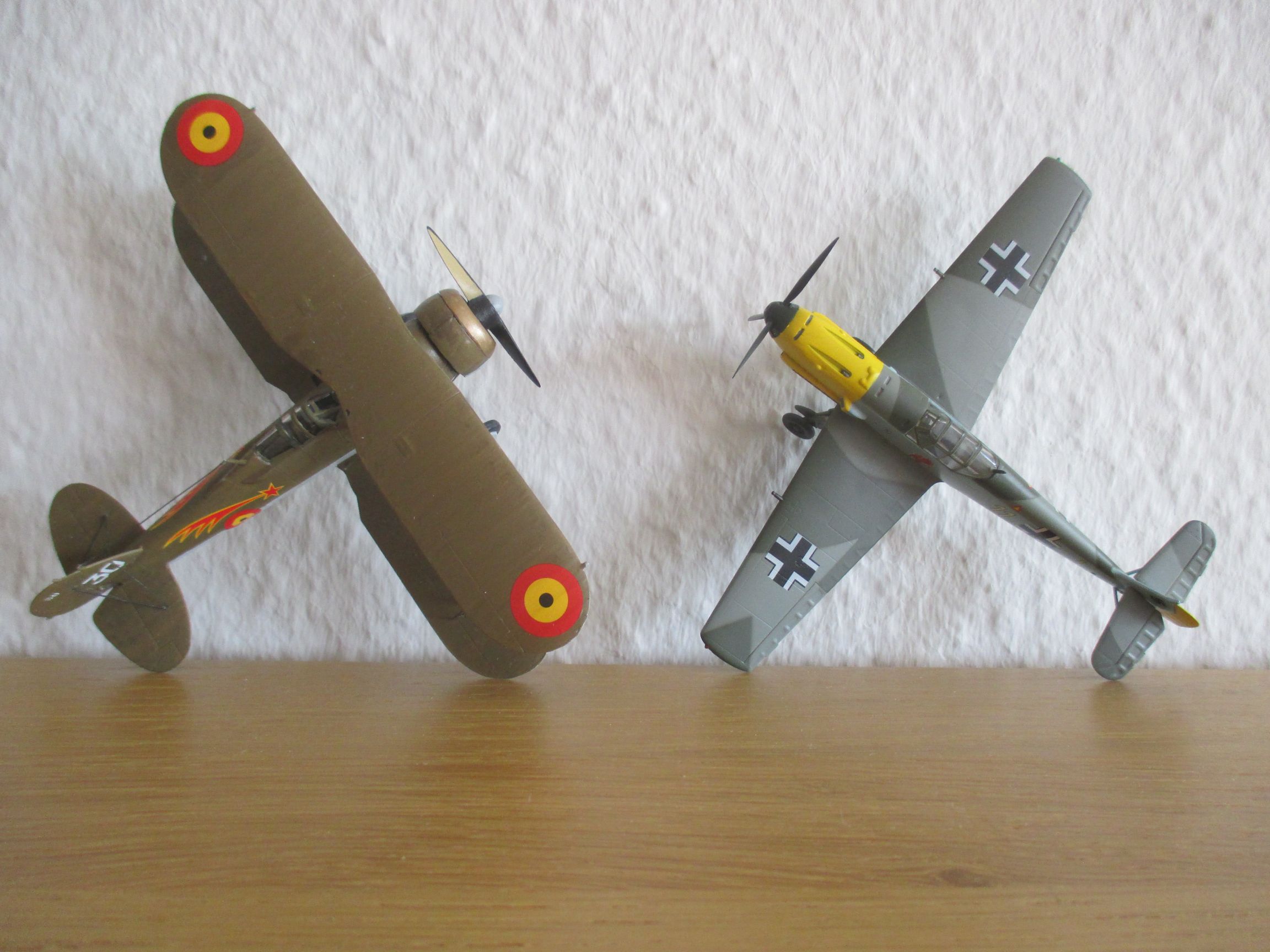
Could we arouse your curiosity about our collections with over 40 originals and faithful replicas, as many engines and hundreds of items of equipment as well as our model collection? Then we look forward to your visit to Ulmer Strasse 2 at the Hanover Exhibition Center: see you!
sb
